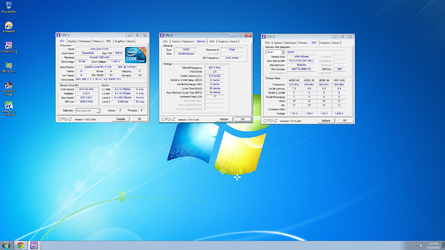- Joined
- Jan 26, 2012
- Location
- Dirty Jersey
Hey guys I am trying to get the best bench I can out of my i7 950. Yes a tad dated but that's good because a lot of you have the experience already to possibly give me a variety of options. I have been trying to bench my 950 and had some success but that was through a daily use OS filled with junk. I recently wiped the ssd's and now am starting fresh with nothing but an OS. No gpu drivers nothing. I am unsure whether a high bclk with a x 21 multi is better or a lower bclk and a x23 multi is better. I have been having a hard time getting it to boot into windows with a X23 multi and know my chip loves the X21 multi but can the X23 multi work on higher clocks? I learned that a higher IOH voltage helps increase "stability" with a higher bclk, and by stability I mean just get me through the 7-8 sec run of super pi or a wprime run. I have settings for 24 hr stability. Anyway I have succeeded in getting an 8.5 sec run with superpi 1m @ 4.5 GHz but want more. I know with this chip I can only get so much using water but I think I can still get that time a bit lower based on other entries I have seen on the Bot.
I am just not sure how to refine my settings to acheive a better time and was wondering if any of the benching members can help me out in this refinement.
thanks
I am just not sure how to refine my settings to acheive a better time and was wondering if any of the benching members can help me out in this refinement.
thanks

